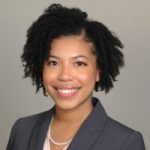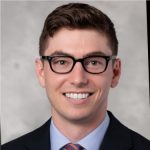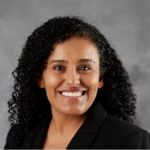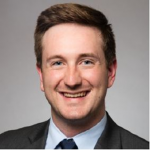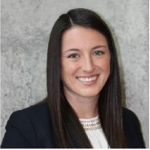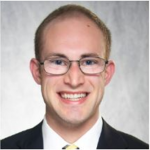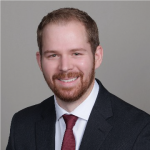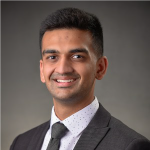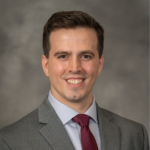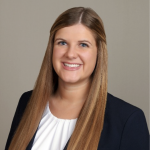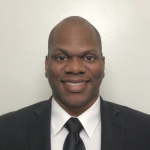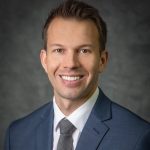A Message from the Residency Director
The University of Wisconsin Department of Ophthalmology and Visual Sciences is committed to excellence, integrity, and professionalism. Our three-year ophthalmology residency program is designed to help residents establish the knowledge and skills that become the necessary foundation for a lifetime of self-education. In addition to taking care of patients, developing strong surgical technique and pursuing research interests, our faculty strives to ensure that our residents reach their full potential as ophthalmologists.
Our resident education provides a breadth of experience beyond standard rotations: a monthly resident-run community clinic where underserved members receive free eye diagnoses and treatment; an elective international rotation to learn surgical techniques rarely performed in this country; a resident-developed lecture series and hands-on training curricula taught to other residents and medical students from other UW programs and departments; individual training sessions on state-of-the-art Femtosecond and EyeSi equipment; annual PHACO and oculoplastic surgical courses; two-week clinical and surgical experience in India; and the opportunity to contribute to leading-edge research projects by working side-by-side with renowned researchers during their three years with us.
While the journey consists of many challenges, each graduate of our program will have also reaped immense rewards.
Please contact Graduate Medical Education (GME) Program Manager Lexa Van Fleet to learn more about our residency program.
Ophthalmology Preliminary Internship
As of July 2023, our ophthalmology residency program now includes four PGY-1 preliminary internship positions. The positions are offered in conjunction with the exceptional University of Wisconsin medicine program. Currently, the preliminary internship is a unique opportunity offered by only a handful of ophthalmology programs.
Program Overview
This is an accordion element with a series of buttons that open and close related content panels.
Aims Statement
The primary goals of our program are to:
- Prepare residents to care for and learn from serving a diverse patient population in a healthy and safe learning and working environment.
- Engage residents in the evaluation and improvement of their residency experience.
- Provide an environment and opportunities that encourage scholarly activity.
- Prepare residents to practice evidence-based medicine, embrace innovation and engage in life-long learning by using state-of-the-art technology and recruiting faculty with a strong commitment for residency training.
- Graduate ophthalmologists who are knowledgeable, skillful, compassionate, collaborative, and committed to improving patient care, enhancing their own skills, and advancing the profession.
Experience
Clinical experience: The training program in ophthalmology begins after one or more years of post-graduate training, including a year of internship. The program is 36 months long, beginning July 1. The department accepts three residents per year for a full complement of nine residents.
The first year of residency, most of which is spent in the eye clinic, allows residents to develop proficiency in ophthalmologic examination, including refraction, keratometry, slit lamp biomicroscopy, perimetry, gonioscopy, and ophthalmoscopy. During one rotation, a portion of the resident’s time is devoted to studying ophthalmic pathology.
The second and third years of the residency provide training in all aspects of ophthalmic surgery and various subspecialty areas. All surgery is supervised by experienced faculty and is taught in a graded fashion beginning in the first year. Faculty members have sub-specialty training in the following areas: corneal and external disease, glaucoma, neuro-ophthalmology, ophthalmic pathology, ophthalmic plastic and reconstructive surgery, pediatric ophthalmology and strabismus, retinal disease and uveitis.
The rotations at UW Hospital and Clinics and William S. Middleton Memorial Veterans Hospital provide the resident with concentrated involvement in outpatient and inpatient ophthalmic surgery.
The pediatric ophthalmology rotation also includes both inpatients and outpatients and emphasizes training in extraocular muscle surgery.
University of Wisconsin Hospitals and Clinics was ranked 17th on U.S. News & World Report’s Best Hospitals Honor Roll, a list of the nation’s most highly ranked hospitals. The University of Wisconsin–Madison has been ranked 19th nationally and 25th worldwide by the Center for World University Rankings.
International experience: Third-year residents have the opportunity to experience an intensive two-week clinical/surgical rotation at Shroff’s Charity Hospital in Delhi, India.
Surgical experience: All residents in our program will receive in-house surgical training, including cataract surgery, basic strabismus surgery, retinal, plastics, corneal, glaucoma, and basic refractive surgery.
Resident Rotation Schedule
Rotations
Comprehensive Rotation
The comprehensive rotation is designed to provide third-year residents with a fantastic surgical experience. Residents work exclusively with four comprehensive attendings with high surgical volume and excellent case turn-over. On average residents operate two full days per week. The schedule is such that the resident is scheduled in the attending clinic with whom they operated the day following cases, which provides for excellent follow-up and continuity of care. In addition, many common office procedures (YAG capsulotomy, YAG peripheral iridotomy, and laser retinopexy) are performed during this rotation. Residents have the opportunity to learn various surgical techniques and can add to their surgical “tool belt” during this rotation. Finally, residents have the opportunity to manage common ocular problems in a resident only urgent-care clinic one afternoon per week. During this clinic, residents can build relationships with patients as the primary provider.
Cornea Rotation
Residents spend eight weeks on the cornea service during both the second and third years. There is great exposure to common cornea and uveitic entities, as well as refractive surgery. Resident participation in surgery is common, with an emphasis placed on cataract surgery, pterygium excision, PKP and DSEK surgery. We are one of the few residency programs in the country where all graduates are LASIK certified. Third year residents are provided with LASIK training, and then given the opportunity to be active in the entire process from patient screening and surgical planning to performing the procedure and overseeing post-operative care.
Glaucoma Rotation
During the glaucoma rotation, second-year residents work with three attendings and the glaucoma fellow in the OR and in clinic. Surgical opportunities include glaucoma drainage implants and cataract cases. Throughout the rotation, you become very comfortable with gonioscopy, visual field interpretation, retinal nerve fiber layer interpretation, and management of complex glaucoma patients. Each week you will meet with one attending to discuss glaucoma topics from basic aqueous dynamics to post-operative management of trabeculectomy patients.
Neuro-ophthalmology Rotation
The neuro-ophthalmology rotation is a six-week rotation during the second year of residency. Residents are exposed to pathology including optic neuropathies, pupillary and motility problems, brain tumors, and unexplained visual symptoms after evaluation by multiple ophthalmologists and sub-specialists. Over the course of the rotation, the resident becomes accustomed to performing various specialized tests like the OKN drum, physician killing refractions, pupillary measurements and drop testing, vestibular maneuvers, and techniques for dealing with difficult patients. The number of patients seen per day is small compared to other clinics, allowing plenty of time for teaching and questions.
Oculoplastics/Pathology Rotation
The Oculoplastics/Pathology rotation is a fantastic first-year rotation, where time is split between these two services. Residents work with two full-time oculoplastics faculty in clinic and the OR, where you will certainly gain the skills to be the primary surgeon in blepharoplasties, tarsorrhaphies, levator repairs, entropion/ectropion repairs, enucleation and evisceration procedures. You will also first assist in more complicated procedures such as orbital decompressions, orbital biopsies, Mohs reconstructions, and orbital fracture repairs. Most graduates will have far surpassed graduation requirements for oculoplastics procedures. Two half-days per week are spent in our dedicated eye pathology laboratory, assisting in grossing and reading out histopathology with ocular pathology fellows while receiving valuable one-on-one instruction.
Pediatric Ophthalmology/Strabismus Rotation
The pediatric ophthalmology rotation is the most unique rotation of the first year of residency. In general, residents will be much less independent in clinic (especially compared to the VA), but learn to feel more comfortable working with children and parents in a very busy clinic setting. Faculty and staff will orient you to the nuances of the pediatric eye, explain the conditions and diseases common to children, and introduce you to the various treatment options. While on the rotation you will be responsible for all weekday pediatric ophthalmology consults at the American Family Children’s Hospital, with follow up visits scheduled after clinic with the pediatric fellow or attending. In addition, the pediatric ophthalmology resident can expect this to be a great surgical experience.
Research Rotation
During the first year of residency, you will have three weeks of protected research time between the pediatrics and retina rotations. Residents will begin a research project that is continued throughout residency training. Faculty compile a range of possible topics including basic research and clinical research opportunities, and each incoming resident is given the opportunity to select a project based on his/her own interests. Additional protected time is devoted to research during the second and third years. The primary objective of this rotation is to complete a project that will allow for presentation in poster or oral form at AAO or ARVO, with the eventual goal of publication.
Retina Rotation
During the first year, the retina rotation exposes each resident to the interesting world of medical retina, as well as provides the opportunity to participate in a wide range of surgeries from retinal detachments to vitrectomies for vitreous hemorrhages. You will alternate your time between clinic and OR, and reap the benefits from working with each of the faculty. In the OR, you may get your first experience performing retrobulbar anesthesia, basic wound suturing, and perhaps late in the rotation, some aspects of the actual vitrectomy surgery. Many attendings also involve the resident in attaching scleral buckles, as well. Didactic sessions throughout the rotation add to your knowledge base as you learn and discuss interesting and complex cases.
VA Rotation
Each resident will spend four months of every year at the VA. The design of having a first, second and third-year resident at the VA at the same time allows great opportunities for teamwork, team building, and getting to know your fellow residents. Most days involve comprehensive ophthalmology; however, there are sub-specialty days including glaucoma, retina, oculoplastics, cornea and neuro-ophthalmology. The clinical experience at the VA is an excellent opportunity to work on exam skills, efficiency in patient care, and clinical decision making.
The VA also provides excellent surgical opportunities for each year of the residency. The first-year resident is provided the opportunity to assist in the OR on retina and oculoplastics cases, and learns IOL insertion and viscoelastic removal while working with the third-year resident. The second-year resident has 15 guaranteed surgical opportunities on cataract cases under the “back in” approach where you begin with cortex removal and lens insertion and gradually progress to full cases depending upon your skill level and prior cataract experience. In the final year, you are very busy surgically and once proficiency in cataract skills has been demonstrated, the third-year resident is allowed to also perform femtosecond-assisted cataract surgery. The VA Hospital purchased the LenSx platform to perform femtosecond laser-assisted cataract surgery (FLACS) in 2013. Our staff surgeons perform 5-7 FLACS cases on one Friday morning per month at the VA. Once the senior residents at the VA become proficient in standard phacoemulsification cataract surgery, they complete Phase 1 and Phase 2 LenSx training with a vendor representative and begin performing FLACS in their final month of surgery at the VA. Our program’s goal is for residents to graduate with 10 FLACS cases, meeting requirements for LenSx certification.
Global Ophthalmology
Supported by the Ophthalmology Residency Program and Global Ophthalmology Initiatives (GOI), the Department’s mission of global leadership in saving sight is at the root of the resident core curriculum. During training, residents will engage in a 3-year interactive, multi-delivery format experiential curricular program informed by the ACGME Core Competencies and in alignment with the American Academy of Ophthalmology (AAO), which includes but not limited to interactive basic science lectures on global ocular health, global journal clubs, collaborative global conferences with partner sites, online reflective discussions, local and global fieldwork opportunities. This program aims to assist residents in preparations to practice as a professional in delivering services to save sight in the ever-changing world and as future global citizen-ophthalmologists, provide passionate residents new pathways to address and grapple with emerging issues in vision global health.
Residents have a multitude of opportunities to apply their global ophthalmology experiences to the local and global community. By working with our outreach sites in the surrounding region, distinctive populations like our Amish and Mennonite Outreach Clinic, Department of Corrections Clinic, Veterans Hospital, the Madison Bi-monthly Community Clinic and Annual World Sight Day Clinic, we provide physicians access to diverse patient care populations and low-income and under-resourced patients, many of which come from diverse linguistic, socioeconomic, cultural, and knowledge backgrounds. Beyond our borders, DOVS global fieldwork opportunities include a one-week GME-sponsored surgical and clinical rotation for an excelling PGY3 resident at the Tzu Chi Eye Center in Manila, Philippines, and a two-week GME-sponsored surgical and clinical rotation opportunity for PGY4 residents at our long-standing partner, Dr. Shroff’s Charity Eye Hospital in New Delhi, India. Residents must apply for and be awarded the GME Global Elective Credit to engage in department-sponsored surgical and clinical experiences abroad. Any resident who completes the global curriculum expectations by the end of training will be issued a certificate of distinction in global ophthalmology by the Department. Resident alumni are encouraged to remain active with DOVS GOI, where they have opportunities to engage in teaching and mentoring of residents on global fieldwork and contribute to various global learning activities as clinical adjunct appointed faculty.
Call and Consults
Inpatient Consult Responsibilities
Adult in-patient consults during daytime hours are handled on a rotating basis by all residents. Consults coming in between 4:30 PM and 8:00 AM are fielded by the primary on-call resident.
Pediatric in-patient consults are handled by the resident rotating on the pediatrics rotation in conjunction with the pediatrics fellow
On-Call Responsibilities
First-year residents serve as the primary on-call (home call) resource for UW Hospital and Clinics on a rotating basis: 4:30 PM to 8:00 AM and all day Saturday and Sunday. However, second-year residents will alternate for primary coverage one day each week. Primary call schedules are flexible and determined at the discretion of each first-year class. Second call (back-up) and VA call are provided by the second and third-year residents on a rotating basis with the schedule created by these residents, as well.
Conferences
Basic Science Lecture Series
All residents attend a weekly half-day didactic session, designed as an 18-month curriculum to cover all topics in the Basic and Clinical Science Course (BCSC) published by the American Academy of Ophthalmology. Faculty members specializing in each respective topic present the lectures, which are recorded and available for review when a resident is absent.
Grand Rounds
Residents and faculty present interesting, “classic,” or difficult cases to an audience of department and community ophthalmologists, technicians, researchers and other interested parties including veterinary and medical students. Every resident is required to present at a minimum of two Grand Rounds during the first year, while second and third-year residents should expect to present three Grand Rounds per year. Residents work closely with faculty as they develop their presentations and prepare for a brief question and answer period that follows their talk. Occasionally, visiting lecturers, often experts in a subspecialty, are invited to speak. These conferences offer CME credit for ophthalmologists and optometrists.
Journal Club
One evening per month, residents collaborate with a subspecialty service in the presentation and discussion of contemporary and classic journal articles. Responsibilities to moderate and present rotate among the residents throughout the academic year. Faculty members and fellow(s) from the specific service attend, as any other interested faculty, and they generate questions and participate in the discussion.
Monday Morning Case Conference / M&M
Residents present cases in an informal setting designed to encourage discussion among residents and faculty. Often interesting on-call cases from the previous weekend provide timely material for discussion, as do clinic cases and surgical complications. This also offers the opportunity for morbidity & mortality discussions on a regular basis.
Neuro-Ophthalmology Conference
While on the neuro-ophthalmology rotation, the resident presents an interesting patient or unusual case for the benefit of all other residents. Discussion and teaching will occur with neuro-ophthalmology faculty in attendance.
Pediatric Ophthalmology Journal Club
The resident on the pediatric rotation, the pediatric fellow, and the faculty gather to discuss contemporary articles in Pediatric Ophthalmology.
Resident Curriculum Committee (RCC)
Members of RCC include all residents and the Residency Team, and meet once a month to discuss residency program issues, provide a forum for suggestions and new ideas, and address any resident concerns.
Retina Workout
Each week, retina faculty provide a curriculum designed to cover classic retinal pathology using case presentation format. Ancillary testing including fundus photographs, OCTs, fluorescein angiograms, ICG angiograms are used to illustrate. All residents participate in the discussion which offers excellent practice in reading all retinal ancillary testing and making diagnoses.
Vitreoretinal Case Conference and Electroretinogram (ERG) Conference
The current retina resident, retina fellows and faculty meet to review current cases, as well as electroretinograms from clinic patients.
Meet Our Residents
Resident Interns, PGY-1
PGY-2
PGY-3
PGY-4
Application Process
This is an accordion element with a series of buttons that open and close related content panels.
Overview
The Department of Ophthalmology and Visual Sciences recruits for 4 resident positions annually. The Department participates in the Ophthalmology Matching Program through the SF Match Centralized Application Service sponsored by the Association of University Professors of Ophthalmology (AUPO).
All applicants must apply and register at the following website: sfmatch.org
Criteria to be eligible for a UWHC-GME Program:
- A. Graduate of US or Canadian medical schools OR
- B. Graduates of US colleges of osteopathic medicine OR
- C. Graduates outside the US or Canada – must be ECFMG-certified
- A. US citizenship OR
- B. Permanent legal residency status (Green Card) OR
- C. Eligible to obtain a J-1 Clinical Visa sponsored by ECFMG
Candidate Review and Selection
- Resident applications will be processed and disseminated to the residency program by SFMATCH.
- Applications will then be reviewed by the Ophthalmology Residency Selection Committee chaired by Dr. Anna Momont.
- Applicants will receive an email notifying them that their application has been reviewed if they have been selected for an interview.
- For more information, please see AUPO resources for medical students applying to ophthalmology.
Resident Selection
Major factors we consider in selecting residents include the applicant’s record in medical school, communication and interpersonal skills, our assessment of their maturity and suitability for our program, and the likelihood of high levels of future professional achievement. Applicants anticipating careers as clinician-investigators typically find our program especially attractive. We interview approximately 50 applicants out of a pool of 600+ applicants.
Non-U.S. Citizen Requirements
Applicants who are not U.S. citizens must acquire or currently hold one of the following to begin training at the University of Wisconsin Hospitals and Clinics (UWHCA) in an ACGME accredited residency or fellowship program.
- Lawful Permanent Resident (“Green Card”). Authorizes the card holder the right to live and work in the United States indefinitely.
- Initial or continuation J-1 Alien Physician (Clinical Training Program). The J-1 Alien Physician visa is sponsored by the Educational Commission for Foreign Medical Graduates (ECFMG) for the sole purpose of Graduate Medical Education training. An “alien physician is” a foreign medical graduate seeking to pursue graduate medical education training from an accredited school. ECFMG will not sponsor an individual for longer than seven years. J visa holders are not permitted to moonlight (internal or external). They cannot participate in any activities outside the approved training program, nor are they eligible to receive any monies that are not part of the approved training program stipend. Review the EVSP Reference Guide for more detailed information about the J-1 Physician.
- Employment Authorization Document (EAD). The applicant has a pending Petition for Permanent Residence status
Additional Visa Information
- Canadian Citizens and Landed Immigrants. Canadian citizens applying for J-1 or- J-2 visa status are not required to obtain a visa stamp at a U.S. Consulate to enter the United States. However, Canadian citizens must use Form DS-2019 to secure J status at a U.S. port of entry. All J-1 applicants may enter the United States up to 30 days prior to the program start date identified on Form DS-2019. www.ecfmg.org/evsp/j1-canadian-citizens.pdf
- Visa Change of Status – J-1 “research scholar” to J-1 “alien physician.” A change in category from “research scholar” to “alien physician” is possible under certain circumstances. It requires pre-approval from the DoS and must be initiated by ECFMG. The requirements for a change of category request and other details are outlined on the ECFMG website.
- H-IB visa (temporary professional worker). As an employer, UWHCA does not sponsor an H-1B visa for graduate medical education training.
- OPT (optional practical training). This visa is not meant to be used for graduate medical education training. It is a work benefit allowed to international students in F-1 non-immigrant status who are enrolled in or completing a degree program in the U.S.
Contact the Graduate Medical Education Office at uwgme@uwhealth.org.
For more information, please contact:
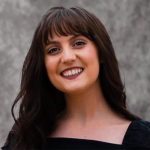 Lexa Van Fleet
Lexa Van Fleet
Graduate Medical Education (GME) Program Manager
avanfleet@wisc.edu
(608) 263-5339

